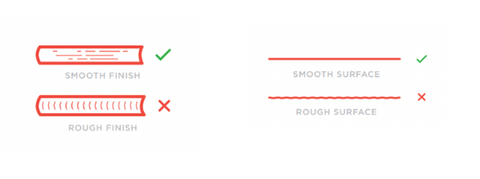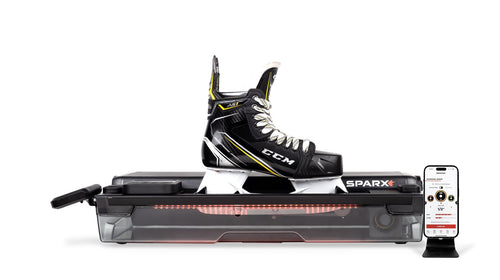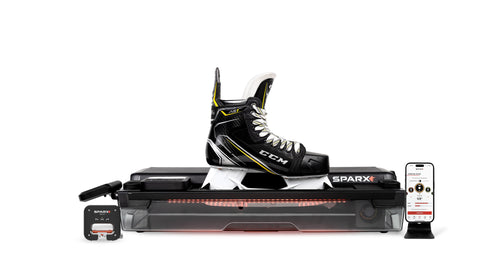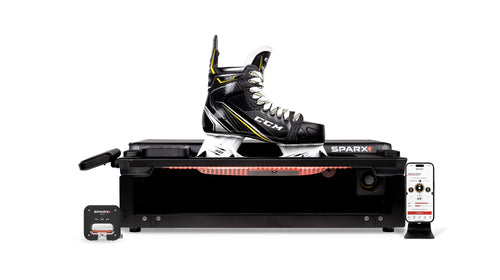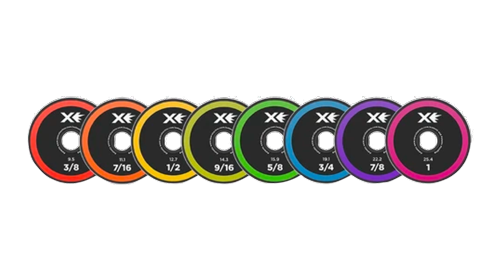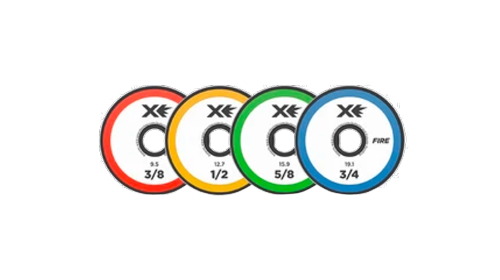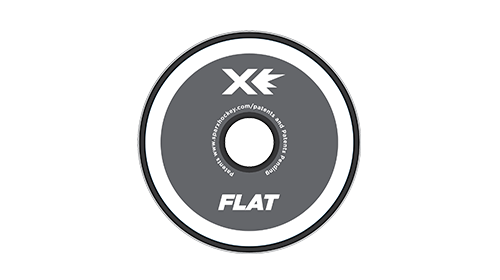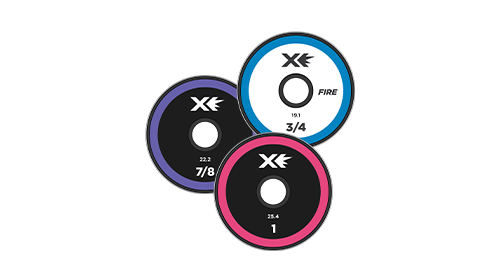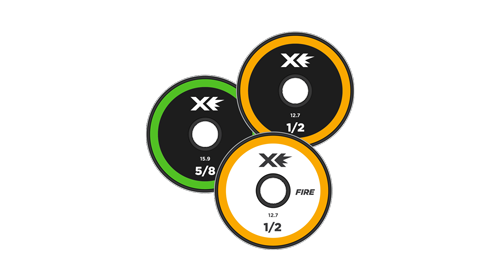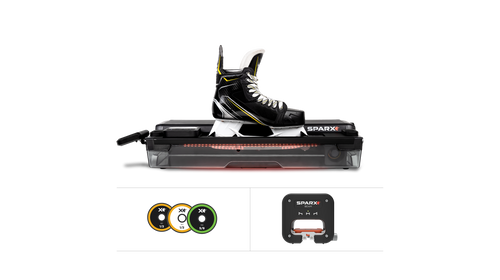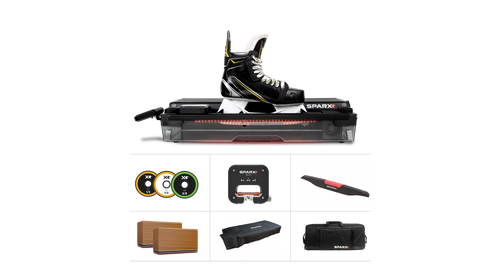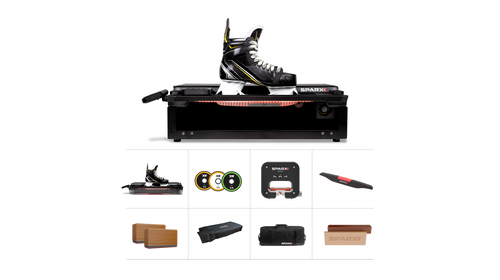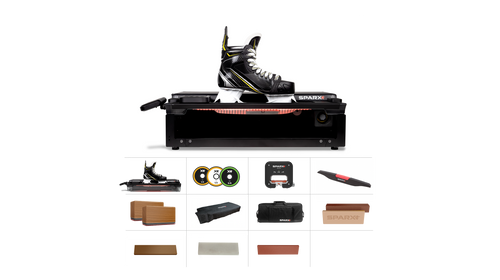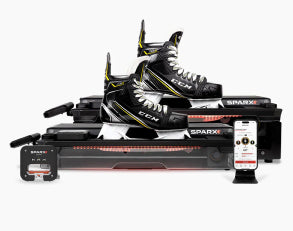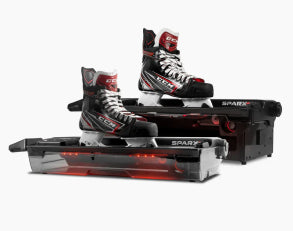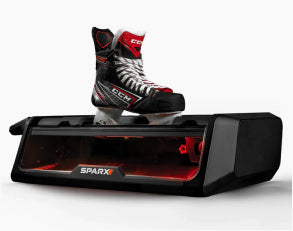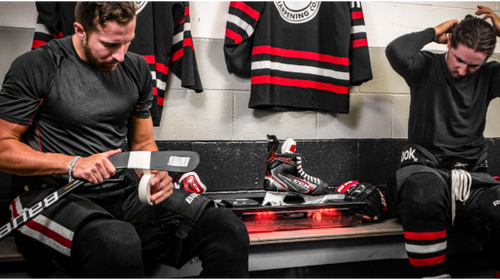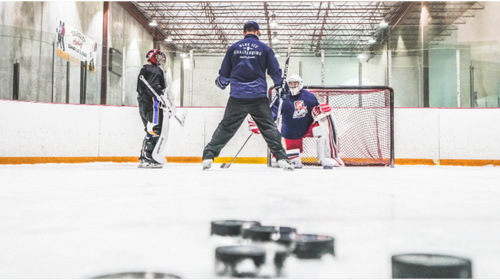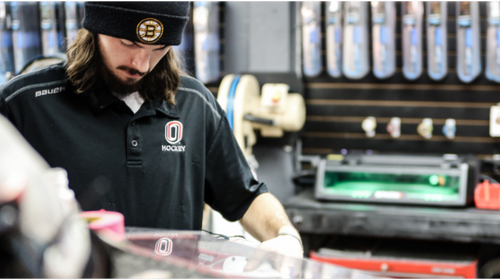
TESTING EVEN EDGES
Once you have sharpened your skates and completed the deburring process, it is always a good idea to check your edges to make sure they are even. Below are few different ways to measure your edges.
EDGE CHECKER
Shown below is the Sparx Edge Checker, a precision tool crafted and designed to measure skate blades. It is important to utilize an edge checker from a reputable skate sharpening company because small differences in the manufacturing process of an edge checker can cause inaccurate edge readings. With the skate upside down (and deburred), secure the Sparx Edge Checker on the sharpened skate blade. Place the magentic tilt bar on the top of the skating surface and use the lines to confirm the edges are of equal height. We recommend testing in the heel, mid, and toe locations on the skate blade.
It is important to note that there is a margin of error in which a small difference in edge height is undetectable to any skater, even the highest-level professional player. We’ve done extensive testing looking at a skater’s sensitivity to uneven edges. We have found that players, at any level, cannot detect skate blades that are uneven by less than 3/1000ths of an inch (.003”). If you are within this range (which is marked green on the side of the Sparx Edge Checker), we recommend you do not make adjustments as skaters will be unable to feel a difference. To put it in perspective, .003” is less than the thickness of a piece of paper.

THE COIN TEST
While using a Sparx Edge Checker gives you the most accurate reading of whether or not your edges are even, a “quarter test” can also be used in the absence of an edge checker. After getting your skates sharpened and having them deburred, turn the skate upside down. With the blade facing the ceiling, carefully balance a coin on the skating surface. Bring the skate blade to eye-level and look down the blade towards the coin. If there is a significant height difference between the inside and outside edge, it will be visible; you’ll see one side of the coin will be higher than the other. If you see this, we recommend re-sharpening your skates.

TESTING FOR SHARP EDGES
After testing and confirming the edges of your skate blade are even, you will want to confirm they are indeed sharp.
When we say sharp edges, what we mean is that the inside and outside edges of your skate blade are razor-sharp, clean and without burrs or nicks.
Many people are familiar with the fingernail test to check your edges. We recommend testing 3-5 spots up and down the blade on both the inside and outside edges. If you feel a little bite to your nail as you drag it across the edge – the edge is sharp. If your fingernail ever feels like it slides across the edge smoothly (i.e. as if the edge were rounded and not sharp) – this is an indication that the edge might not be sharpened properly and we recommend re-sharpening your skates.

TESTING FOR SMOOTH FINISH
A smooth finish on the skating surface of your blade is the final factor we look for when inspecting for a perfect sharpening. A nice, smooth finish contributes to a near frictionless glide of the skate on the ice surface. Basic science says, the rougher a surface, the more friction created when moving one object over another.
The smoother the surface we can create, the less friction or drag we’ll have when the blade is gliding on ice. If you’ve ever experienced skates that feel sluggish, a rough surface finish could be slowing you down.
THE VISUAL CHECK
A proper sharpening will leave a mirror-like finish with nothing more than very fine lines visible that run the length of the blade from heel to toe. A rough surface, which typically is visible, oftentimes has a snakeskin like or scalloped pattern that runs across the blade. When you see a pattern like this, it is not a good sharpening. Visible lines cause friction and reduce overall glide, decreasing on-ice speed.
THE SURFACE TEST
The easiest test for smooth surface finish is to slide the edge of a fingernail lengthwise down the hollow that was sharpened into the blade. If the fingernail slides along the blade with a mostly friction-free slide (i.e. if you don’t feel anything) then the skate blade is sufficiently smooth. If the fingernail feels a zipper-like sensation as it slides down the blade then the surface is not smooth enough and the skate should be corrected.
Whether you prefer a traditional or a flat-bottom hollow, a smooth finish matters. A proper finish reduces friction and conserves energy.
